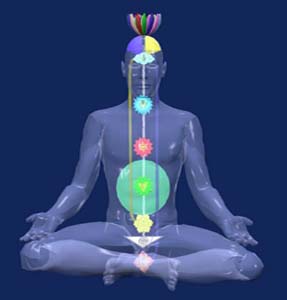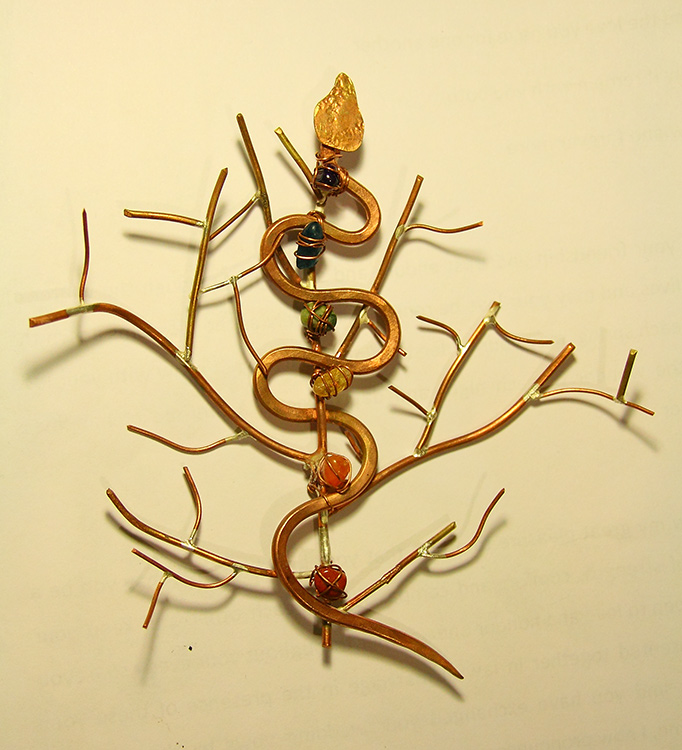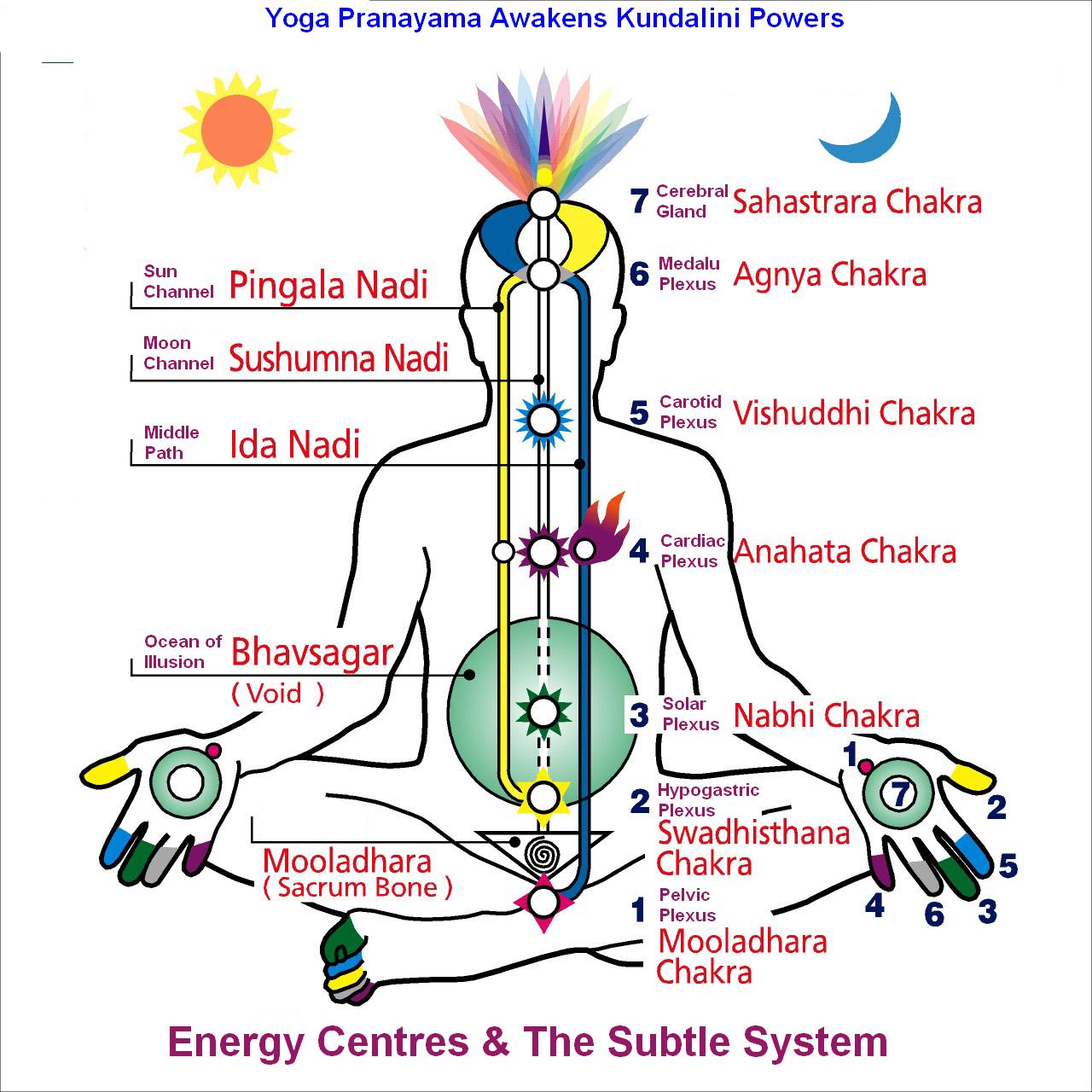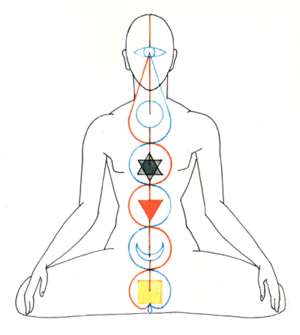Kundalini is an ancient Hindu system of philosophy and practice. It is based on the Tantric philosophy which, according to some scholars, predates Patanjali and his Yoga Sutras.

Kundalini Shakti
Two of the most significant texts that guide our current yoga practices are Patanjali’s Yoga Sutras and the Hatha Yoga Pradipika (by Swatmarama). Patanjali, in the Sutras makes no mention of the term Kundalini and only a scant reference to a couple of terms from the naadi (nervous system) system used in Kundalini. The Yoga Sutras provide the basic foundation and the underlying philosophy of the yoga practice, not the actual details of the practices involved. The main guiding text that provides details of the yoga practices is the Hatha Yoga Pradipika which came out approximately one thousand years ago.
In the practices described in the Pradipika, Swatmarama decided to integrate the yoga philosophy from Patanjali and the Kundalini practices taken from the ancient system of Tantra. As a result many of the yoga styles that are in vogue today are influenced both by the basic yoga philosophy given in the Yoga Sutras and the practices including the Kundalini aspect of yoga as given in the Pradipika.
What is Kundalini?
Kundalini is the creative energy of the universe, Shakti, and is represented as a snake coiled 3.5 times at the base of the spine. The word ‘kundalini’ is derived from ‘kundala’ which means a coil. In the Tantric texts it is mentioned that Shakti, after creating the 36 elemets (tattvas) that represent this material creation, including the human being, decided to sleep and rest at the base of the spine. In the Chakra terminology, the base of the spine represents the Muladhara Chakra (Root or Base Chakra). In the Tantric system, Shakti is the creative half of the supreme consciousness, Shiva. In many Indian texts, Shiva is referred to as "ardha-narishvara" (a god who is half male and half female). The male aspect of Shiva is the supreme consciousness and the feminine aspect is the creative force, Shakti. While Shakti resides at the Muladhara Chakra, Shiva, on the other hand, resides at the crown center called Sahasrara Chakra.

Kundalini as serpent
It is this separation between Shiva and Shakti which is described as the cause of human suffering. The problem is confounded by the fact the Shakti is not only separated from Shiva but is known to be sleeping. The only way to eliminate suffering is to make sure that Shakti can reunite and merge with Shiva. Because the Kundalini Shakti is asleep, the first effort is to awaken this sleeping Shakti. Once awakened, it needs to move up the spine, along a subtle nerve channel called Sushumna Naadi, until it can reach and merge with Shiva, its master and the supreme consciousness.
Chakras
The word chakra in Sanskrit means a wheel. These are centers of activity that receive, assimilate and express life force energy called ‘prana’. They can also be viewed as spheres of bio-energetic activity emanating from the major nerve centers in the body. In the Kundalini system, seven main chakras are mentioned which are aligned in an ascending column from the base of the spine to the top of the head. These are the seven chakras:

Chakras
- Muladhara (Root)
- Svadhisthana (Sacral)
- Manipura (Navel)
- Anahata (Heart)
- Vishuddhi (Throat)
- Ajna (Third Eye)
- Sahasrara (Thousand Petaled Lotus at the crown of the head)
Each chakra has several associated characteristics that include number of petals, the letters of the Sanskrit alphabet associated with each petal, various human propensities associated with the chakra, the great element (earth, water, fire, air and ether), the deity, the animal, shape, color, hue, the seed (bija) mantra etc.
For example, here is a description of the Muladhara chakra (taken from this website):
"Muladhara, the root centre of physical experience at the base of the spine, the sacral plexus, carries on each of its four red petals a letter of the Sanskrit alphabet inscribe in shining yellow or gold : va, sa, sa, sa. These letters are contained within a yellow square representing the earth element, together with the seed mantra Lam. The four letters represent the root vibration, and are related to the vital breath known as Apana.
An inverted triangle in the centre of the square encloses the unmanifest Kundalini in three and a half coils around the black or red svayambhu-linga. In the pericarp is found the presiding deity Brahma in deep red, four-faced three eyed, four-armed, holding a trident, a libation jar, a rosary, and in Abhaya mudra, the gesture of dispelling fear. The deity is the lord of the gross physical or material world. This chakra is associated with the qualities of resistance and solidity representing the earth element."
The total number of petals for all the chakras add up to 50 which is the total number of alphabets in the Sanskrit language. Thus each petal corresponds to one letter of the alphabet.
The correspondence of the chakras with the physiological glands is represented in the picture shown here.
The Naadi System (subtle channels of pranic energy)

Ida-Pingala Naadis
According to some of the ancient Kundalini-related texts, there are seventy two thousand naadis in the system. These naadis are the carriers of subtle, vital life energy called prana. Of these, three are considered to be the most significant – Ida, Pingala and Sushumna. Ida is associated with the left nostril and represents feminine energy corresponding to Shakti. Pingala, on the other hand, represents masculine energy corresponding to Shiva. Ida is also called the Chandra (moon or the cool) naadi whereas Pingala is called the Surya (sun or hot) naadi. Both these naadis originate at the Muladhara chakra at the base of the spine, Ida from the left side and Pingala from the right side of the chakra. These naadis criss-cross at the intervening five chakras until they reach the corresponding nostrils via the Ajna chakra (the third eye chakra located between the eye brows). The Sushumna naadi is the subtle channel of energy which is represented as traveling along the spinal column.
When we breathe through the left nostril, we activate the Ida naadi; when we breathe through the right nostril, we activate the Pingala naadi. In general, at any given time, one of the two nostrils is more dominant. That is, air flows more easily through one nostril than the other at any given time. This dominance, according to another branch of yoga called Swara Yoga, shifts to the other nostril every 60 to 90 minutes.
The designated path for the Kundalini shakti to reach its destination, the crown center (abode of Shiva) is to travel through the Sushumna. However, as long as the two nerve currents flowing in the Ida and the Pingala naadis are out of balance, pathway through Sushumna is blocked and Kundalini cannot flow through this central channel. For the Shakti to travel up the Sushumna naadi, the two nerve currents of Ida and Pingala must be balanced through various yoga practices.
It is not sufficient to balance the two naadi systems. Kundalini, while trying to move up the Sushumna naadi has to pass through the intervening chakras. If the chakras are impure, they will not allow the Kundalini to pass through them. As such, the chakras also have to be cleansed and energized through these yoga practices to facilitate the free flow of shakti.
In short, for the Kundalini to merge with her master, Shiva, the following must be accomplished:
- Kundalini needs to be awakened
- For the shakti to be able to flow through the Sushumna naadi, the flows of Ida and Pingala must be balanced
- All the chakras must be purified
I would like to emphasize here that all this is possible only when the yoga practitioner is a true "mumukshu" (the Sanskrit term for one who has an intense desire for liberation).
hello I’m new in this site and this is the first time i leave a message in any web site…too…
why i may leave one here..it is becuase Yoga is so beautiful
i want to thnaks the author and owner of this web site.. this web site looks great…. and informative.
I’m in Canada…i wish i had more time to practice..also i wish i had a computer of my own ( i use public computers)
since 2009 there was a recesion here and i have not recover…
to know and to love André Chouraqui ( the quote is not complete I have to find it again)
lately i sprain my back( if i may share this) and the tree position has help me to recover…i think completly…but i have to take care now ….I’m 51…
my occupation is cooking, i was staning ( painting) coming down the step ladder, got out of balance, and i made a quick move, not to fall, is then that i sprain my back….but the tree postion has help me greatly….
thank you so much for this web site….this is my second visit…and i will read it….like a lot =)..
wishing everyone Harmony ( and cooperation)
I know french i was born with spanish( central America) and i love english
read french, undetand spanish Love english…
to know and to love André Chouraqui
Thank you, Andre, for visiting my website. I am so glad that you found it useful. It is heartening to see that yoga has helped you with your back pain. Wishing you all the best.